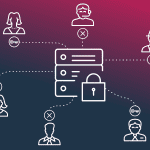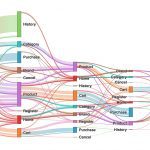For many organizations, data is a business asset that's owned by the IT department. Based on this data ownership' model, there's limited access to data across the organization, and no transparency around what's available internally. Now, an increasing number of organizations are rushing to mandate organization-wide data strategies. But with the isolated data ownership model in … [Read more...] about How a Data Catalog Enables Data Democratization
Big Data
Learn everything you need to know about big data. Find out how companies are using this revolutionary technology and what it means for your business strategy.
How Live Chats & Business Automation Will Impact The Travel Industry in 2022
Any industry, including travel, is undergoing rapid disruption due to artificial intelligence. Artificial intelligence is able to automate some repetitive tasks that would otherwise require human effort and time. Artificial intelligence can accomplish these tasks in seconds, so you and your team can focus on more complex activities. As an example, live chats have … [Read more...] about How Live Chats & Business Automation Will Impact The Travel Industry in 2022
How Do You Use a Sankey Diagram in Marketing?
Sankey diagrams are used to visualize the flow of resources or materials. They can be used to depict how much of something goes into or comes out of a system. They are not the same as flow charts, where steps are highlighted in processes. Sankey charts are the best alternatives to common pie charts or bars because both bar and pie charts show the general comparison whereas … [Read more...] about How Do You Use a Sankey Diagram in Marketing?
3 Things To Consider When Partitioning Your Data Lake
Partitioning in data lakes is an improvement practice for your query speed. Managed lake solutions like AWS Athena suggest partitioning as best practices to optimize query performance. When you read through their partitioning documentation, it may seem to be easy to implement and may give the impression that once you apply to a partition, you can just forget about it. However, … [Read more...] about 3 Things To Consider When Partitioning Your Data Lake
5 Ways to Become SOC 2 Compliant
People familiar with various compliance measures have probably at least heard passing mentions of System and Organization Controls 2, more commonly referred to as SOC 2. Its a type of voluntary compliance developed by the American Institute of Certified Public Accountants. SOC 2 covers various aspects of sensitive data handling. For example, an SOC 2 data center would show … [Read more...] about 5 Ways to Become SOC 2 Compliant
What is big data?
Big data is a term that refers to the massive amount of digital data created and shared every day. Big data can transform how we live, work, and communicate. It can be used to improve everything from public health and urban planning to business and marketing.
Big data is also changing the way we think about privacy and security. The volume, velocity, and variety of big data present challenges and opportunities for organizations and individuals. Regardless, big data is here to stay, and its impact will only continue to grow in the years to come.
What is big data analytics?
Big data analytics is the process of turning large, complex data sets into actionable insights. Businesses use various analytical tools and techniques, including machine learning and statistical analysis, to do this.
Big data analytics can be used to improve decision-making in areas like marketing, operations, and customer service. It can also be used to identify new business opportunities and optimize existing processes. With the help of big data analysis, businesses can gain a competitive edge by using their data better.
Want to learn more about big data? Datafloq has courses available. Contact us to get started.
When was big data introduced?
The term big data was coined in the 1990s, with some giving credit to John Mashey for popularizing the term. However, the concept of big data has been around for much longer.
Where does big data come from?
In the early days of computing, scientists and businesses began to realize that the amount of data being generated was increasing exponentially. As a result, they began to develop new methods for storing and processing data.
Over time, these methods have become increasingly sophisticated and have played a key role in enabling businesses to make sense of vast amounts of information. Today, big data is used in various industries, from retail to healthcare, and its importance is only likely to grow in the years to come.
What are examples of big data?
One of the most common examples of big data is social media data. With over 2 billion active users, Facebook generates a huge amount of data every day. This includes information on user interactions, posts, and even location data. Analyzing this data can help companies better understand their customers and target their marketing efforts.
Another example of big data is GPS signals. These signals are constantly being generated by devices like cell phones and fitness trackers. When combined with other data sets, GPS signals can be used to provide insights into everything from traffic patterns to human behavior. Finally, weather patterns are another type of big data set. By tracking these patterns over time, scientists can better understand the impact of climate change and develop strategies for mitigating its effects.
How do companies use big data?
Companies use big data in marketing, product development, and customer service. By analyzing large data sets, businesses can identify patterns and trends that would be otherwise difficult to spot. For example, a company might use big data to track customer behavior patterns to improve its marketing efforts.
Alternatively, a company might use big data to improve its products by identifying areas where customers are most likely to experience problems. For instance, big data can be used to improve customer service by finding pain points in the customer journey. Ultimately, big data provides companies with a valuable tool for gaining insights into their business operations.







